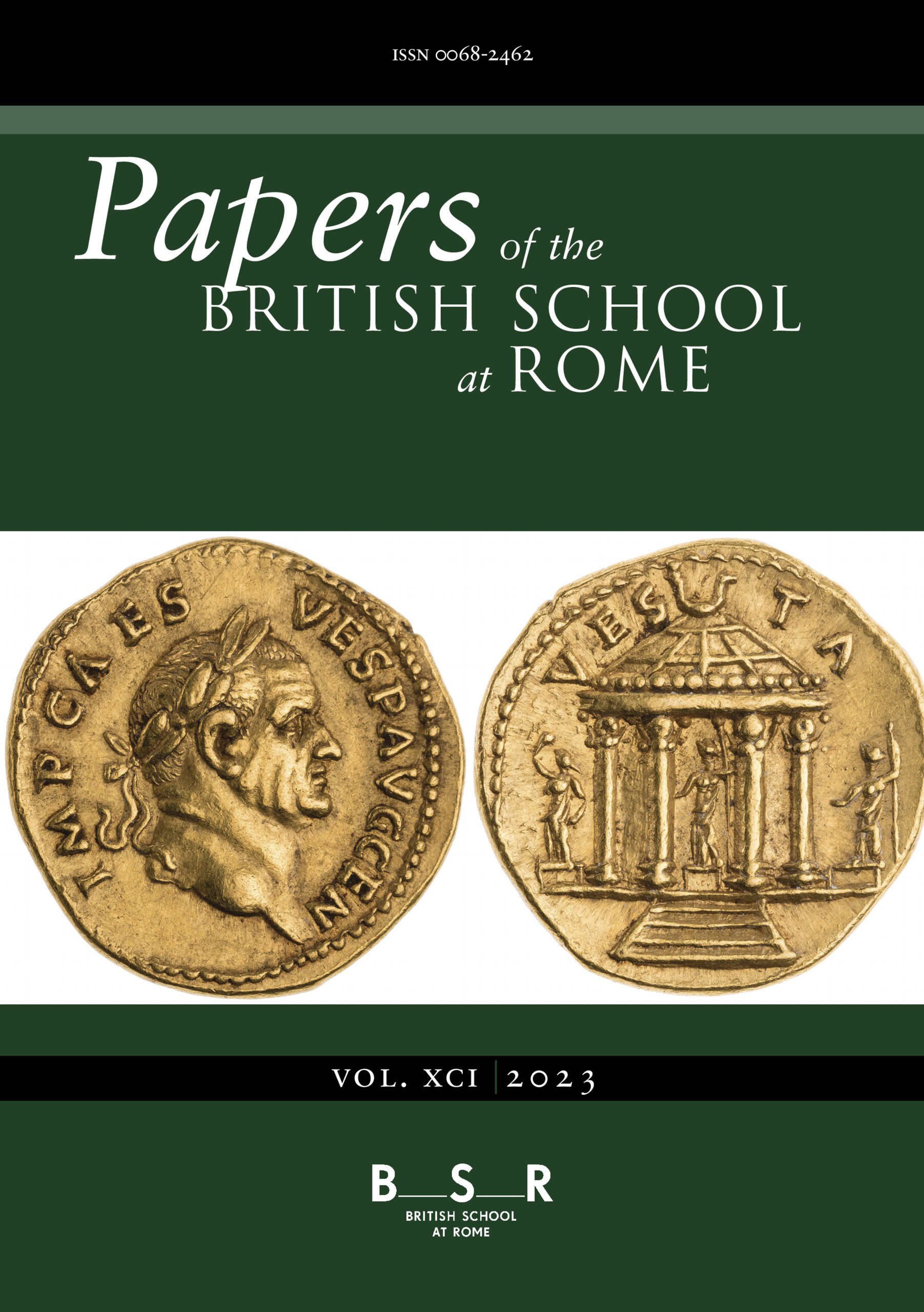No CrossRef data available.
Article contents
NEW VOICES IN EPIGRAPHY PAST AND PRESENT: UNPUBLISHED EPITAPHS FROM ROME
Published online by Cambridge University Press: 17 October 2025
Abstract
The article aims to shed new light on the voices of bereaved benefactors: slaves, freedmen and freedwomen, who are often marginalized in literary and monumental sources, by exploring a series of unpublished funerary inscriptions from Rome, currently in storage at the Museo Nazionale Romano. Editions of the text, translations and commentaries have been produced by young scholars from the British School at Rome (former participants of the BSR Postgraduate Course in Epigraphy). Their entries, edited by Abigail Graham (Institute for Classical Studies, University of London, British School at Rome) and Silvia Orlandi (La Sapienza, President of the Association Internationale d’ Epigraphie Grecque et Latine), are an exciting and unique opportunity to view inscriptions through a different lens: from scholars with diverse backgrounds and interests (history, archaeology, epigraphy, as well as linguistics), including postgraduates and academics. Careful consideration of text, appearance and context presents an array of voices and audiences as well as poignant messages that transcend time and space through a common experience: grief. By incorporating interdisciplinary scholars in the editorial process, we aim to provide and promote uniquely accessible epigraphic discussions that reflect the broader impact and significance of epitaphs as texts, images and emotive experiences.
Questo contributo intende gettare nuova luce sulle voci di dedicanti in lutto: schiavi, liberti e liberte, spesso marginalizzati nelle fonti letterarie e monumentali, esplorando una serie di iscrizioni funerarie inedite provenienti da Roma, attualmente conservate presso il Museo Nazionale Romano. Edizioni del testo, traduzioni e commenti sono stati prodotti da giovani studiosi della British School at Rome (ex partecipanti al BSR Postgraduate Course in Epigraphy). Le loro edizioni, curate da Abigail Graham (University of London, British School at Rome) e Silvia Orlandi (Sapienza Università di Roma), sono un’opportunità affascinante e unica per vedere le iscrizioni attraverso una lente diversa: da studiosi con background e interessi diversi (storia, archeologia, epigrafia e linguistica), tra cui laureati e accademici. Considerazioni attente di testo, aspetto e contesto, presentano una serie di voci e pubblici, nonché messaggi commoventi che trascendono il tempo e lo spazio attraverso un’esperienza comune: il dolore. Coinvolgendo studiosi di diverse discipline nel processo editoriale, miriamo a fornire e promuovere schede epigrafiche accessibili che riflettano l’impatto e il significato più ampi degli epitaffi come testi, immagini ed esperienze emotive.
Information
- Type
- Articles
- Information
- Copyright
- © The Author(s), 2025. Published by Cambridge University Press on behalf of The British School at Rome.
Footnotes
This paper was a collaborative effort supported by numerous individuals and institutions. We would like to thank the Museo Nazionale Romano, Stephan Verger (former director) and the Archivio di Epigrafia Latina Silvio Panciera, who generously allowed permission to study and publish these materials from the MNR’s Magazzino Epigrafico. “All images are reproduced by courtesy of the Ministero della Cultura - Museo Nazionale Romano.” We are also grateful to the British School at Rome, especially Stefania Peterlini, who has supported the BSR Postgraduate Course in Epigraphy for over a decade. We would also like to thank Carlotta Caruso, who offered crucial guidance, training and access to the epigraphic collections at the Museo Nazionale Romano Terme di Diocleziano, and to Francesca Bigi and Caterina Papi, who kindly shared with us their experiences and insights at the Parco Archeologico del Celio, as well as Lauren Ginsberg and Grace Funsten for their thoughtful suggestions, tireless support and enthusiasm. For editorial support, we would also like to thank Maria Letizia Caldelli, Tuomo Norluoto, Clara María Ramos-Taboada, Kostas Vlassopoulos and Mateu Portells Watson. Finally, we are indebted to the Department of Classics at La Sapienza University, particularly the Latin Epigraphy archive, and the Institute for Classical Studies (University of London) for their continued support of scholars and scholarship throughout this project.
References
REFERENCES
Abbreviations
- AE
L’Année Épigraphique
- CAR
Carta archeologica di Roma II
- CIL
Corpus Inscriptionum Latinarum
- EAGLE
Europeana Network of Ancient Greek and Latin Epigraphy https://www.eagle-network.eu/advanced-search/
- EDR
Epigraphic Database Roma (www.edr-edr.it)
- EDCS
Epigraphik-Datenbank Clauss-Slaby (http://www.manfredclauss.de/)
- ILS
Inscriptiones Latinae Selectae.
- MNR
Museo Nazionale Romano
L’Année Épigraphique
Carta archeologica di Roma II
Corpus Inscriptionum Latinarum
Europeana Network of Ancient Greek and Latin Epigraphy https://www.eagle-network.eu/advanced-search/
Epigraphic Database Roma (www.edr-edr.it)
Epigraphik-Datenbank Clauss-Slaby (http://www.manfredclauss.de/)
Inscriptiones Latinae Selectae.
Museo Nazionale Romano

